Like most ambitious new products, it’s been a few years since we first started seeing tidbits of the Oreka O2 cycling treadmill trainer. Which, is a good point: I’m not even sure what to call this thing.
Officially the company bills it as a ‘bike trainer’. But to the rest of the world it looks like a bike treadmill. There’s no running on it though. So, I’m going to keep ya on your toes and call it all sorts of things in this article. At this point, Oreka has only made one product – so it’s easy enough to even just call it The Oreka Thing.
No matter – as you’ve deduced by now, this is an interactive smart trainer of a bike treadmill. It acts more or less the same as a Wahoo KICKR would, except that it’s a giant treadmill that you place your bike on instead. You might wonder how it’s different than something like the Tacx Magnum bike-treadmill thing? Well, that costs over 10,000EUR, whereas this costs a mere 3,699EUR. You noticed that Euros denomination there, because both are only available in Europe at this time. Probably cause of the size.
Oh – and if the size of this textual review isn’t your cup of tea, just hit the play button. I promise, it’s worth the watch!

Finally, as for how I got this thing, the company shipped up a media loaner from their headquarters in Spain back this past fall, and I’ve been poking at it since then. Once I’m done here, they’ll pick it up next week and that’s it. No part of this review or any others I do is sponsored. So then, let’s talk boxes.
What’s On The Pallet & Setup:
Your smart trainer at home came in a small microwave sized box? Aww…how adorable!
This beast comes on a full-size double-pallet. Not one of those wimpy single pallets you might make a trendy hipster couch from. Nope, duo time here. The kind of thing you move big, expensive, heavy things on.
I enlisted the help of a real-life pallet mover, plus two fake ones: GPLAMA & DesFit to get it where we wanted it:
Mostly, I took photos and they moved things around. That’s called delegation. Later, they made me walk home. Lama rode the pallet mover home:
In any event, after you simply remove the box top, you’re left with the parts:
Putting it together is actually relatively straightforward. The unit comes in basically just a couple of pieces:
A) The treadmill part (pretty obvious above)
B) The safety bar (three big tubes above) + bolts
C) The cords (look like electrical cords)
D) Some skewer stuff (looks like bike trainer skewer)
E) The rope/bracket connecting your bike to trainer (pink thing on ground above)
It’s one of those jobs that you’ll look at and assume is an Ikea nightmare, but in reality only takes a few minutes. Even less time when you sucker two friends into doing it.
Essentially, it comes down to three basic things:
A) Plugging in some cables
B) Attaching the handlebar/emergency button
C) Attaching your bike to the doohickey.
The handlebar comes in three pieces to put together. As part of that, you’re also attaching the emergency stop button to the top, and then ensuring the wire is properly run down the handlebar to the front of the Oreka platform. It can be a little finicky to do solo, but with two people it’s pretty easy.
Then you’re connecting the emergency stop button to the inside of the front of the frame. You’ll take off the front of the frame, consider the number of things you shouldn’t touch, find the right spot, and attach it. Close it back up and pretend you didn’t see behind the curtain.
Then, on the back of the frame you’ll attach a bracket to your bike. As part of that you’ll need to swap out the quick release skewer on your bike with this new one. I guess it’s not really a quick release skewer since it takes a hex wrench to remove.
This one has these funky little metal pieces off the end, which hold the bracket so you don’t ride off the front of the treadmill. You’ll position it vertically first, and then rotate down, which completes the lock:
It’s not clear one way or the other if you’re supposed to ride this quick release skewer outside, but I did just fine for hours. I figured if it works inside to hold my weight, it should hopefully work outside (like any other trainer skewer).
Once that’s done, then just attach the pink rope system to the back of the rear frame and you’re good to go. It uses a double-lock system, so it won’t go anywhere without pressing the inner button first and then sliding the pin up.
Setup isn’t hard. It’s quite easy actually. With that, let’s dive into how it all works. Oh, wait – plug the power cable in and press the button:
Ok, now we’re ready to roll.
How it rides:
The Oreka platform might look like a giant treadmill, except there’s a couple of key differences. First being you can’t run on it. That’s because for the most part it’s the weight of the bike pressing down on the belt, which in turn provides forward movement. Sorta like an unpowered treadmill. Your bike though sits atop rollers under the belt. You can see these here below where your rear and front wheels sit:
Whereas the rest of the surface is simply a hard flat material below the belt. You can step on it, but running on it won’t work (trust me, I tried). There’s no way to get the belt to move without forcing the rollers to move.
The point of all that pink rope at the back isn’t to replicate a kinky 50 Shades of Grey scene, but rather to keep your bike from flying off the front of the treadmill. Without it, you’d go off the front instantly. You’ll have constant pressure on that rope at all times (except when you don’t, more on that in a minute).
The rope though pivots, allowing you to sway left and right, which in turn means that you can move about the treadmill/platform just like you would on rollers.
Which, is a good time as any to note that the Oreka system is very similar to riding rollers. Rollers (as well as the Oreka system) do have a distinct advantage in terms of better mimicking the side to side swaying movement of a rider outdoors (something that rocker plates and such while mimicking movement, actually invert the movement). Any saddle movement will ultimately minimize discomfort in the saddle on long rides, which is valuable.
Though, I think there’s two key differences between rollers and the Oreka system:
A) First, obviously, there’s a giant handlebar on the side which increases confidence (though, it also increases ways things can go horribly wrong)
B) The back rope system of the Oreka minimizes swing of the rear of your bike, so that almost puts into slow motion any potential crashes.
To an experienced roller rider, neither of these will matter much. To an inexperienced roller rider, this will make the transition easier. Make no mistake, you can still fall off.
And it’s partially for that reason I quickly decided to wear a helmet. In my case, the only place I could put this thing was in the concrete lower level of the DCR Cave. If I fell off of it, my head *will* hit concrete. There’s no two ways about this. So, a helmet was logical. But I didn’t wear it initially. First, let’s start riding.
To get up and going you’ll pair it up to an app of your choice. Zwift, TrainerRoad, The Sufferfest, whatever. I talk about that in the next section.
Then, as you pedal you’ll feel the resistance fade away. At first, you’re providing all of the momentum of the platform. Kinda like trying to take a potato sack down a slide. But after a short bit the platform takes over, and your pedaling effectively keeps things similar to out on the road.
Typically when I talk about ‘road-like feel’ of trainers, I’m primarily talking about acceleration and deceleration. Flywheel momentum effectively. How well does it replicate applying a surge of power, or sprinting. But also – how well does it replicate letting off power. When you surge outdoors you’ll feel that spin-up of acceleration, but also an equally realistic deceleration depending on the terrain.
However, with the Oreka, there’s a second element to consider: Does it actually *feel* like the road. In other words, does it feel like my tires are on the road?
And oddly enough, it actually gets closer than any other indoor system I’ve tried, on that count. Because your bike isn’t statically set on three rollers (like indoor rollers), you’re actually on a belt which sits atop an array of rollers that you slowly drift back and forth over. So you feel that nuance, which roughly tricks your brain into thinking it’s on old but well-maintained road.
The second piece – acceleration/deceleration, meaning, how well do you feel the inertia? That part is considerably worse than other indoor systems I’ve tried. The main reason is that as you sprint, you strain forward on the rope, which has a little bit of elasticity in it.
But the split second you stop pushing forward hard, it instantly snaps you back against the rear of the frame:
The reason for this is simple: The belt speed isn’t actually that finely controlled to deal with this. And so at this point the entire electronic belt system is still maintaining speed (if not accelerating), while your momentum on the bike frame has started to decelerate. If the belt was 50-meters long, you’d never notice. But you’ve got approximately 3-6” (~8-15cm) of play here, which at 20-25MPH (upwards of 40KPH), happens instantly. Here’s a short video of it:

In essence, the moment you start sprinting or end sprinting, you feel like a dog yank back on a leash. However, for normal steady-state riding, the sensation is just fine.
One function that caught me off-guard pretty quickly into my first ride with it though was the safety system. As I mentioned above, I started my first ride without a helmet.
However, a few minutes into the ride I noticed abnormalities with the power accuracy. So, I glided to a safe dismount speed and popped off the bike, straddling on my bike while standing on the side-rails (just like any normal running treadmill) to double-check some tech stuff. Except to my surprise a rumble in the jungle occurred between my legs. The treadmill belt started to accelerate faster and faster, despite me (and Zwift) being stopped. My bike, being attached to said treadmill belt, was now meandering at high speed (I’d guess 20MPH/30KPH or so) on the belt, skipping a bit without any weight on it. You can see this moment play out the first time in the video at the top of this post (at the 5:45 marker).
After getting control of my bike by simply lifting it off the belt I pondered my situation. See, unlike the incredibly expensive Tacx Magnum, this unit doesn’t have any optical sensors along the side to detect if you’ve left the belt. Meaning, if you fall off your bike, there’s no system in place to stop the belt. If you look closely at the Tacx Magnum design, the entirety of the length of both sides of the treadmill are optical sensors to see exactly where the bike is.
This is used both for controlling speed during accelerations, but also as a safety measure in case of a crash. Instantly.
Further though, unlike the Magnum, you’re actually ‘tied’ to the Oreka platform via that rear skewer system. So if you crash your bike onto the platform (such as getting caught in the handlebars) and can’t reach the emergency stop button, I don’t see any positive outcomes.
After my initial surprise, I hit the emergency button and added a helmet. I then tried to repro what occurred, and found I could easily do so. Turns out, the belt will re-accelerate if you don’t come to a complete stop. I discussed this with Oreka, and this is expected.
They noted that they haven’t had any complaints from others once they were aware of how this works. And that’s true, when it comes to stopping, now that I understand how it works – that’s fine for casual stops (weird, but fine).
However, my concern is what occurs in a crash. Being tethered to the platform as a belt accelerates below me unstoppably isn’t super ideal.
I think this problem is actually solvable via some additional safety mechanisms. While what Tacx has designed with their crazy optical sensor sharks with lasers system is enviable, I suspect even just a simple connection to a cadence sensor would resolve the issues here. After all, while outdoors if you stop pedaling then eventually the speed stops too (unless headed downhill). Since the Oreka doesn’t provide forward-drive during downhills from Zwift or other apps at present, there’s no issue with simply having the belt cut-out after perhaps 2-seconds of zero-value cadence data.
I don’t doubt there are reliability issues with that approach, but I think this piece needs re-thinking from a safety standpoint. It is notable that there is a wire that runs up into the rear of the frame. It’s not clear to me what this wire does, though the manual does loosely imply a sensor up there somewhere for something:
Anyway, we’ve covered some of the ride feel pieces above, let’s dig a bit deeper into 3rd party app integration and compatibility.
App Compatibility:
The Oreka platform loosely follows the app compatibility standards and industry norms as you’d expect from a high-end trainer. As you probably know, apps like Zwift, TrainerRoad, SufferFest, Rouvy, Kinomap and many more all support most of these industry standards, making it easy to use whatever app you’d like. If trainers or apps don’t support these standards, then it makes it far more difficult for you as the end user.
I say loosely because while Oreka transmits these standards, it doesn’t appear as compatible with apps in real-life testing as I’d like (primarily on the Bluetooth Smart side). Don’t worry, I’ll try and explain.
The Oreka platform transmits data on both ANT+ & Bluetooth Smart channels, as well as allowing interactive resistance control across both ANT+ & Bluetooth Smart. By applying resistance control, apps can simulate climbs as well as set specific wattage targets.
The unit supports the following protocols and transmission standards:
ANT+ FE-C (Trainer Control): This is for controlling the trainer via ANT+ from apps and head units (with cadence/power data). Read tons about it here.
ANT+ Power Meter Profile: This broadcasts as a standard ANT+ power meter, with cadence data
Bluetooth Smart Power Meter Profile: This broadcasts as a standard BLE power meter, with cadence data
Bluetooth Smart FTMS (Trainer Control): This allows apps to control the Oreka over Bluetooth Smart (with cadence/power data)
In theory, between all these standards you can basically connect to anything and everything you’d ever want to. Be it a bike computer or watch, or an app – it’ll be supported.
But in practice, it was a bit rougher. Personally, I’m lazy. So I tend to use an Apple TV to run Zwift most of the time, because I don’t have to deal with setting anything up. So I started there:
And yes, it did show up in the menus and pair just fine as a Bluetooth Smart FTMS device. Meaning, Zwift would be able to control the trainer, including things like increasing grade or resistance via Bluetooth Smart. It would also include power numbers and cadence, though at this juncture the cadence values are static (and will be removed).
The challenge though is that in my testing with Bluetooth Smart and Zwift, it would refuse to change the grade. So while it showed the power the Oreka platform, it didn’t change according to the gradient of the terrain in Zwift.
After circling back to Oreka, it sounds like there’s some issue with the implementation of the protocol, which Zwift has confirmed to them. The two companies are hashing it out.
So instead, I switched over to running Zwift on a laptop using ANT+. In that case it leveraged ANT+ FE-C for control instead of Bluetooth Smart FTMS.
And there, it worked just fine. It controlled the incline as I approached hills, but only hills equal to or greater than 4%. Below that, no change in resistance occurred. Sure, it shows it on the screen, but it doesn’t actually change the resistance on the unit.
In talking with Oreka about it this is a limitation they are aware of. 3% and below grades are not replicated. This doesn’t impact how fast you go in Zwift, since that’s purely a function of your power output, but it does significantly impact the realism. This is especially notable in courses with lots of rollers, because what happens is you effectively ride the first portion of a hill 0-3% as if it were flat. But then 4% hits and it’s a jolt, because you basically go from 0 to 4% instantly.
A quick note that while the Oreka platform as an FE-C trainer could support calibration, there’s no calibration offered by the Oreka platform. Don’t worry, we’ll talk about power accuracy later.
For me, in my testing, I use Zwift and TrainerRoad as my two main apps (which are the two main apps I use personally). In the case of Zwift, I used it in regular riding mode (non-workout mode, aka SIM mode) as well as ERG mode (workout mode). Whereas in the case of TrainerRoad I used it in a structured workout mode (ERG mode). I dig into the nuances of these both within the power accuracy section. So let’s switch to that.
Like with Zwift, the Bluetooth Smart control didn’t work on TrainerRoad either. So I switched to ANT+ there (per recommendation of Oreka). You’ll see the trainer enumerated in a fairly similar manner on TrainerRoad as well:
Also, TrainerRoad’s standard-issue tips page on using smart trainers in ERG mode. Ironically, I didn’t think about it at first, but you should actually apply the last one here too with the Oreka: Put it in a small gear up front. I’ll dive into why in the accuracy section.
Once you’ve got things paired up in TrainerRoad, there’s little options there to tweak on the Oreka. You can now use the Oreka platform as a smart trainer whereby it’ll control the resistance of the Oreka platform automatically according to the target wattages in ERG mode:
(It appears Oreka is still using the ‘development’ ANT manufacturer ID, as opposed to their own assigned on. Each manufacturer – from Garmin to Polar to Wahoo to Suunto has a specific ID assigned. This has no impact on anything here, just a minor thing they need to fix.)
Finally, at this point Oreka doesn’t have any consumer-facing app available for the Oreka platform. So there’s no further configuration or settings to tweak outside of the standard protocols and 3rd party apps.
Power Accuracy:
I’m going to do you a favor. Not me a favor, but you a favor. I’ll tell you straight up it appears to struggle slightly on accuracy. Just a little, only off by hundreds of watts inaccurate.
That allows you to skip this section. A section I’ll still write mind you, but you get to skip it. Like being the teacher’s pet or something.
With that, onto accuracy.
Typically I talk about how I test power meter accuracy against multiple products. And I do here as well. I did it against a PowerTap G3 hub, a Quarq DZero Power Meter, a pair of both Garmin Vector 3 and a pair of Favero Assioma pedals. Except it became readily apparent a mere 30 seconds into my first test that the power numbers coming from the Oreka system simply weren’t even ballpark accurate. I’d be pedaling at 250w, and it’d be reading 100w. Here, let me show you:
The purple line is the Favero Assioma power meter pedals, while the teal line down below is the Oreka platform’s power. As one might surmise, that’s a problem. Wondering if something was up, I reached out to Oreka immediately to see what I was doing wrong. Unfortunately, it’s not me.
The Oreka platform only has power estimation, and in this case – it’s not terribly ideal. Oreka says that when the unit is simulating 3% or less (flat roads), they struggle with accuracy substantially. It sounds like this largely has to do with the speed of the system, and that it struggles at higher speeds rather than lower speeds.
Instead, the company recommends using an external power meter with the Oreka platform. You might remember this is the same issue that InsideRide has with their e-motion roller system, it too has less than ideal power accuracy by itself. Both companies recommend the same: Use a power meter. Of course, we’ll get to my thoughts on that in a moment.
Since it took all of a few minutes to establish that by itself the power meter values are less than a random number generator, I connected it up to my Quarq instead. We’ll use Zwift as an example first, but then I’ll show TrainerRoad (to demonstrate two different simulation types). With Zwift, you’ll pair it as a controllable trainer, which automatically pairs it as a power meter. However, after you do that you’ll re-pair the power meter side to the power meter of your own:
Next, it’s worth noting that currently Oreka broadcasts a cadence signal too. This produces no value, so you should actually disconnect that and use something else (probably your power meter is a good idea). Oreka says they’re working to fix/remove that.
With that setup, off I went. Now at this point it’s less about power accuracy and more about power responsiveness. In this setup I’m reliant on the software platform (Zwift or TrainerRoad in my case) to take my power meter’s input and then look at what the Oreka is saying and figure out how to translate that to a power value that’s offset correctly for the Oreka. In other words, it’s basically applying a constantly changing offset to ‘trick’ the Oreka platform into giving me the correct power.
As such, the above is *NOT* the accuracy of the Oreka, but effectively just the accuracy of the Quarq vs the Favero. Which, is identical.
In the realm of Zwift, that workaround roughly works. It’s not perfect, it’s good enough for most use cases. Note, this doesn’t account for the lack of resistance below grades of 4% however, which I noted earlier on. That piece hasn’t changed, and is still an issue in my opinion. But it does respond just fine to sprints and other efforts largely as I’d expect. Does it feel like a high-end indoor bike? No. But is it mostly acceptable? Sure.
Oh, before I go forward note that with Zwift and TrainerRoad I had to use ANT+ FE-C for all these tests. I did not find the Bluetooth Smart control success on either one (Zwift on Apple TV, or TrainerRoad on a MacBook Pro). ANT+ via both Windows PC and MacBook Pro worked just fine.
Next, what about ERG mode? For that, I switched over to TrainerRoad. I like mixing up the platforms to see how different apps handle it. In this case I paired up the Oreka platform as an ANT+ FE-C trainer, and then paired up my Quarq as an ANT+ power meter.
I ensured ‘auto’ was enabled on TrainerRoad, which is the default setting on their power matching functionality. Again, in this case I’m partially reliant on TrainerRoad’s technology here (meaning, how smart it is or isn’t), but also reliant on Oreka’s ability to handle what TrainerRoad throws at it.
And things got off to a rocky start. In fact, so rocky I started and reset three times thinking something was wrong. You can see the reported power at 345w, despite the target being 143w.
What was wrong was that I was in the biggest chainring. This meant that I was at a higher speed than the Oreka platform could handle at the lower wattage of my initial warm-up (roughly 130w). To resolve that, you shift to your smaller chainring up front, and easiest gear in the back. This is actually a funny lesson that I know from testing trainers. But these days it’s usually around response time – not outright wattage floor.
The ‘wattage floor’ is the *minimum wattage* a trainer can output. For most trainers, it’s roughly in the 70-90w ballpark. Sometimes you have to tweak your gearing to get there, but rarely does any trainer I test have to tweak gearing to get to 130w.
What the changing of gearing does is typically increase responsiveness. The faster the trainer (or belt) in this case moves, the longer it takes to respond to ERG mode changes. In any case, once I shifted gears you can see things started to come back to alignment.
So, into the workout I went. At first, things didn’t go too bad as I stepped up in wattage further into the warm-up. There was virtually no delay in the wattage bump, but you can see it’s taking a while to really stabilize after that bump.
This is a core reason why I dislike power matching technology (from any company). It’s essentially a game of high-speed threesome of the app trying to figure out what the trainer and power meter are doing. Someone is almost always left out. It’s much easier if the trainer is just accurate to begin with.
In any event, what I saw was that it would typically take about 5-15 seconds to stabilize power to the target value. This was problematic for a workout (as I did this day) that had 15-second intervals in it, assuming I simply kept my cadence/gearing/speed the same.
And just to be super clear here – this wasn’t some case of my legs being unable to hit these intervals due to lack of strength.
Now you can see some of them were quite close. But that’s mostly because I’ve been doing this long enough to know how to ‘game’ the system. I would over accelerate (via increasing cadence) just after the start of an interval. By doing so I’d trick the threesome into thinking all was well, and I could keep the set point high enough. I did this for some intervals, but then got mentally tired of doing it towards the end.
If you were doing an ERG mode workout with longer (multi-minute) intervals, there’s no massive issue (aside from the wattage floor) with the Oreka in power match. However, if you were doing shorter intervals (sub-30s), then I don’t think it’s viable without deciding to make a game out of it (and thus, likely impacting the goal of your actual workout, which typically involves both a power and cadence target).
Ultimately, the power accuracy here, simply isn’t here. It’s hard to accept that for a 3,800EUR device, no matter the type of device.
[Side note: I have absolutely zero plans of reviewing the Tacx Magnum offering either. I just don’t get it. It’s outside the ballpark of anyone but Sultans and research institutes, and the limited time I’ve spent on it at tradeshows I didn’t really come away impressed with the road-feel bits enough to pique my curiosity. I have no knowledge one way or the other on accuracy, since I haven’t tested it.]
Summary:
The Oreka platform aims to fill a specific gap in the market – putting a full bike on a treadmill with the freedom slightly greater than that of rollers, but the smarts of an indoor trainer. Essentially a treadmill version of the InsideRide E-Motion rollers. At a basic level, it achieves that. I can ride my bike on it, and when connected to a 3rd party power meter on your bike, it isn’t significantly different as an experience than the aforementioned rollers. And the benefit of both rollers and the Oreka is it mimics the saddle/bike movement of a bike outdoors on the road, which can minimize discomfort on long trainer sessions (a reason why the rocker plate industry is taking off).
The challenge I have is that while I think this is a good first attempt, it’s hard to recommend it. For the price, I expect accurate power. Just like I criticized the InsideRide system that’s 1/3rd the price. When $500 trainers can give me accurate power, so should things above that. My other concern is around the minimum threshold of 4% incline in order to see resistance changes. And finally, I think a bit more work needs to be done on the safety side of it.
Still, I want to see what Oreka can come up with next. If they can find a way to harness the power they have in the platform and fine-tune the software to be more accurate and more compatible, as well as implement some additional safety metrics – I could see it being an option for some. After all, the price isn’t substantially different than some of the smart bikes coming onto the market these days. And hey, if there’s a market for 14,000EUR indoor smart bikes and $4,000 consumer running treadmills, there’s certainly one for a 3,700EUR cycling treadmill.
With that – thanks for reading!
FOUND THIS POST USEFUL? SUPPORT THE SITE!
Hopefully, you found this post useful. The website is really a labor of love, so please consider becoming a DC RAINMAKER Supporter. This gets you an ad-free experience, and access to our (mostly) bi-monthly behind-the-scenes video series of “Shed Talkin’”.
Support DCRainMaker - Shop on Amazon
Otherwise, perhaps consider using the below link if shopping on Amazon. As an Amazon Associate, I earn from qualifying purchases. It doesn’t cost you anything extra, but your purchases help support this website a lot. It could simply be buying toilet paper, or this pizza oven we use and love.

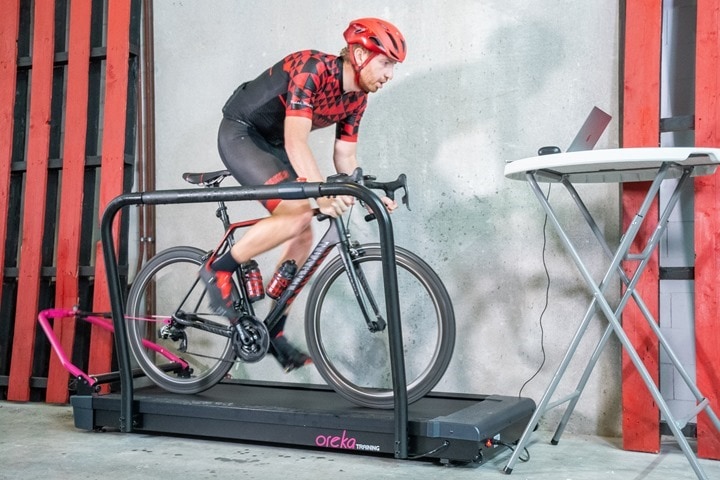
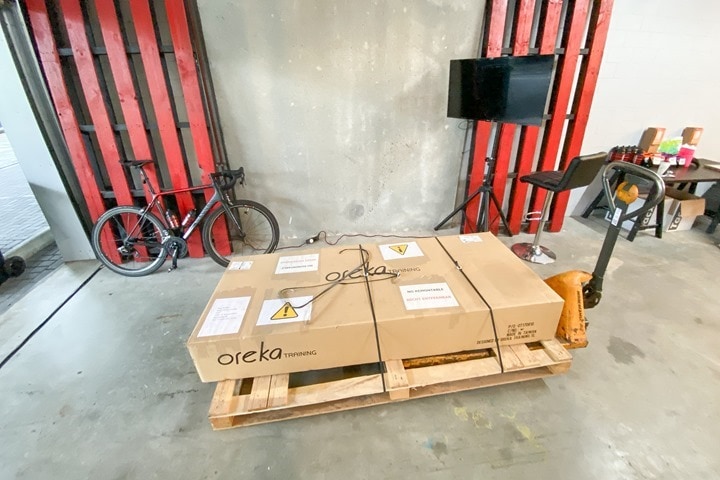
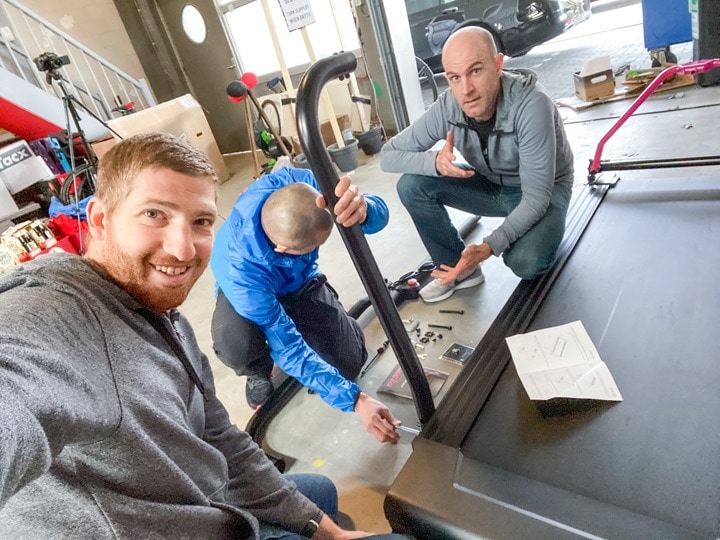



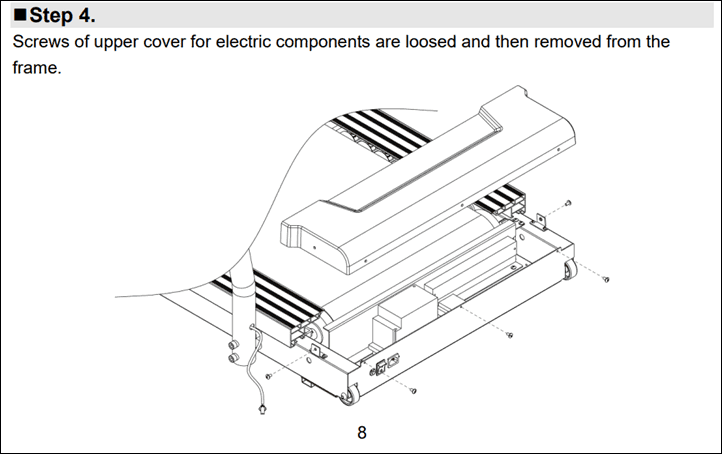

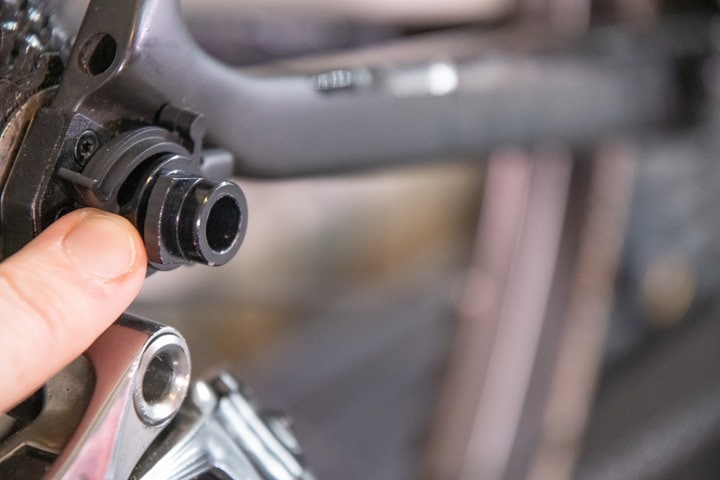
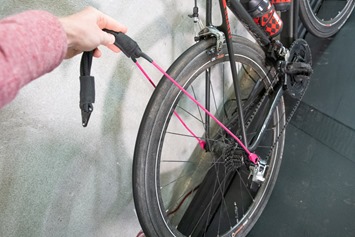
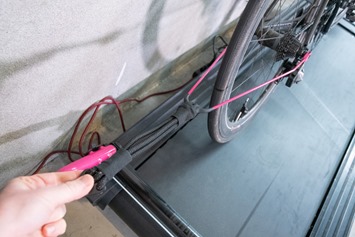
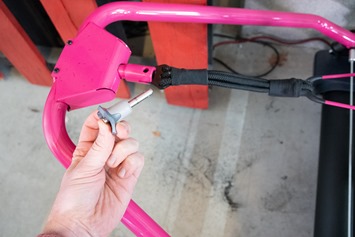
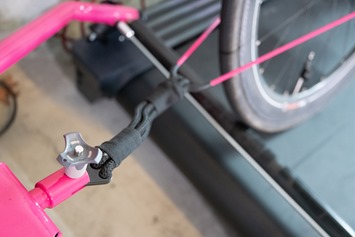
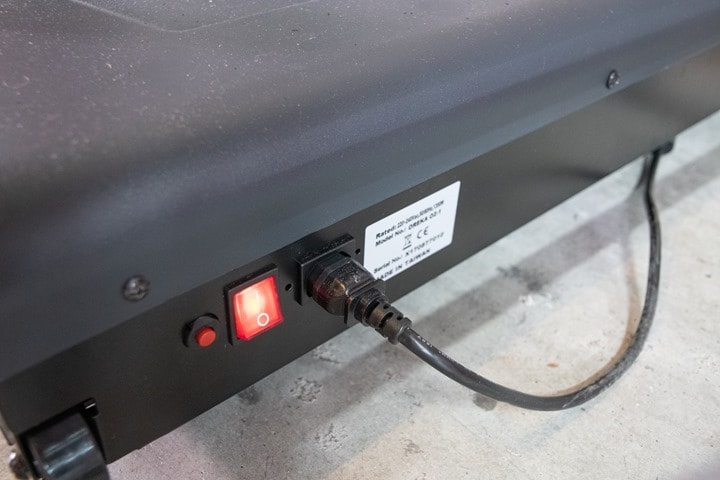

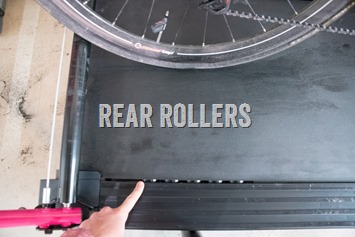
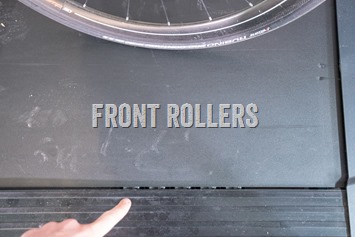
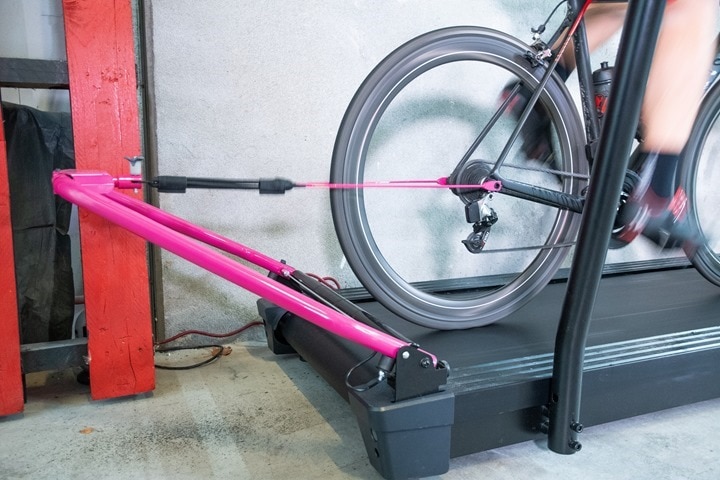
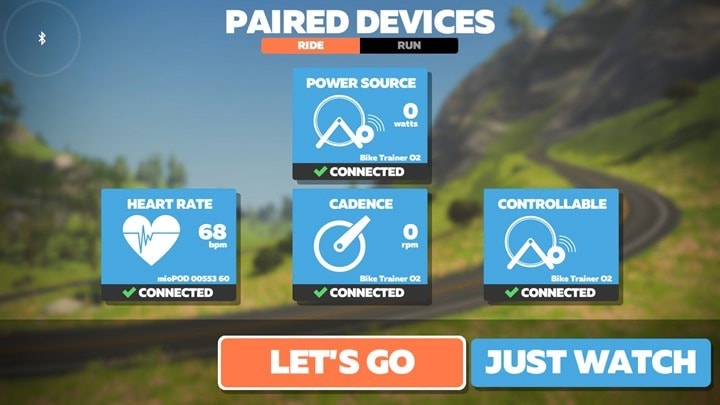
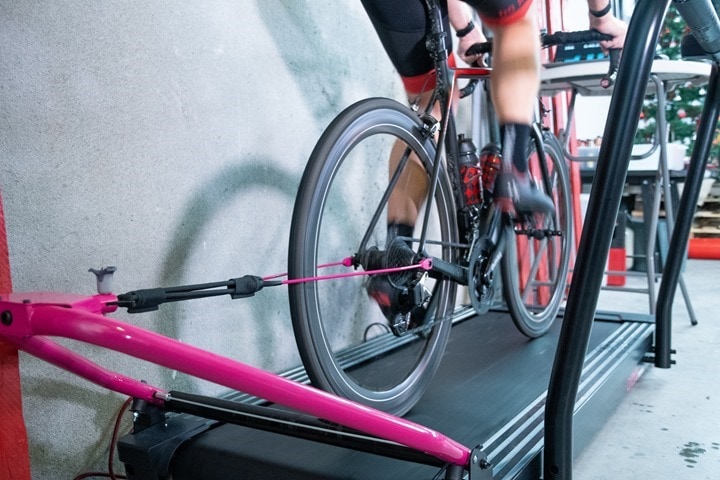
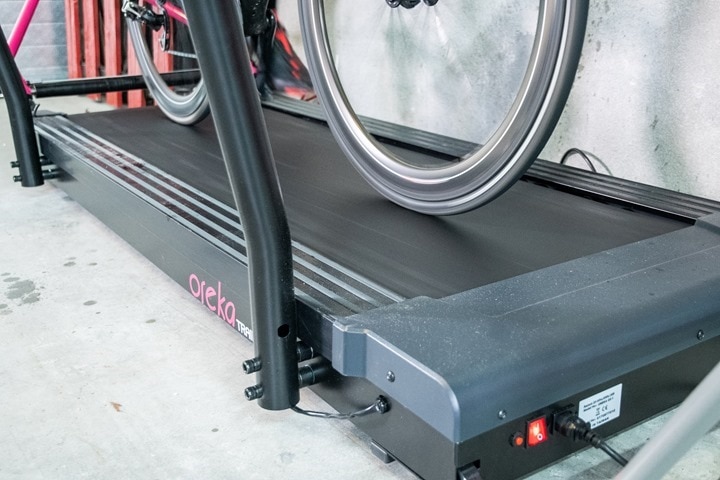
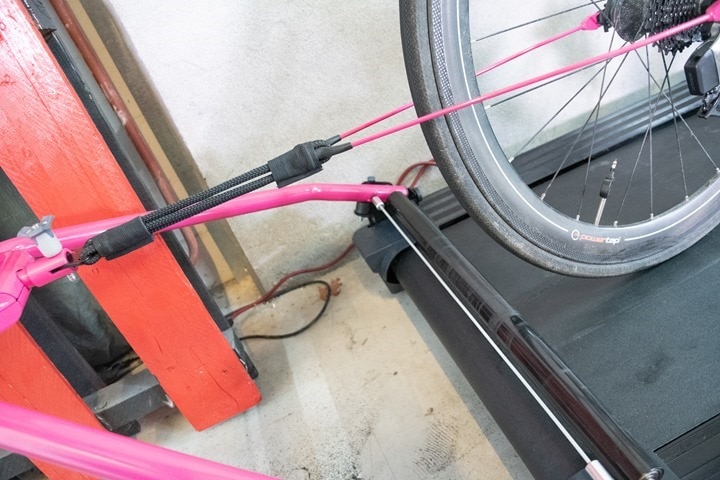
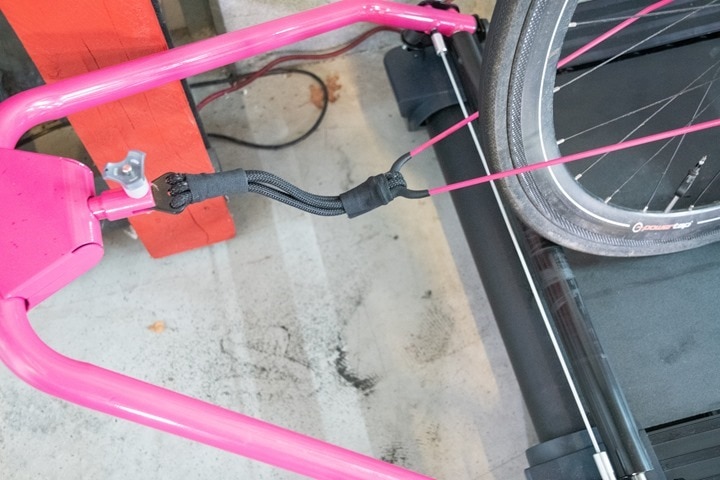
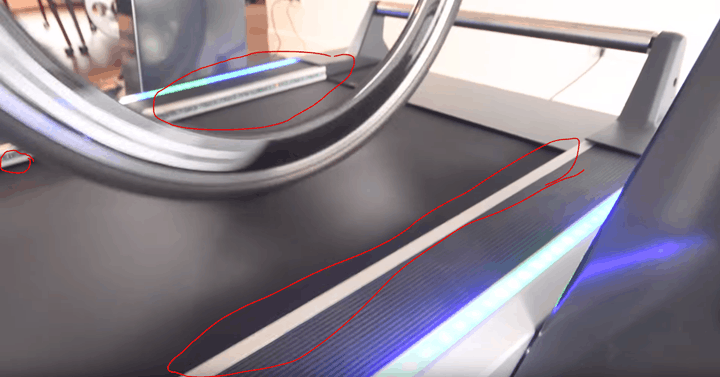

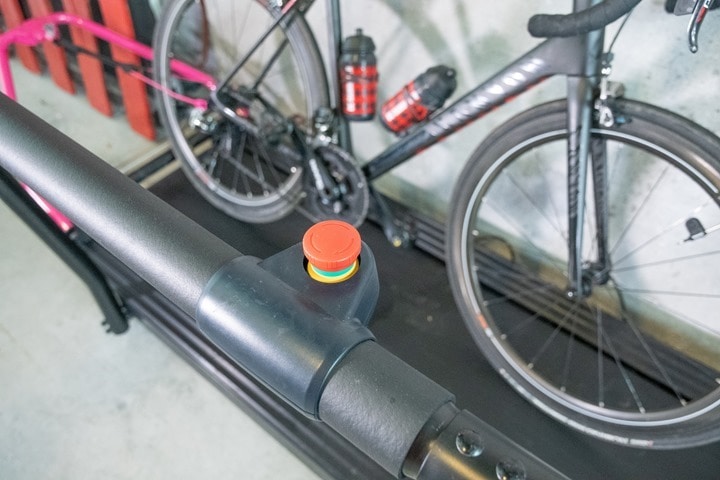



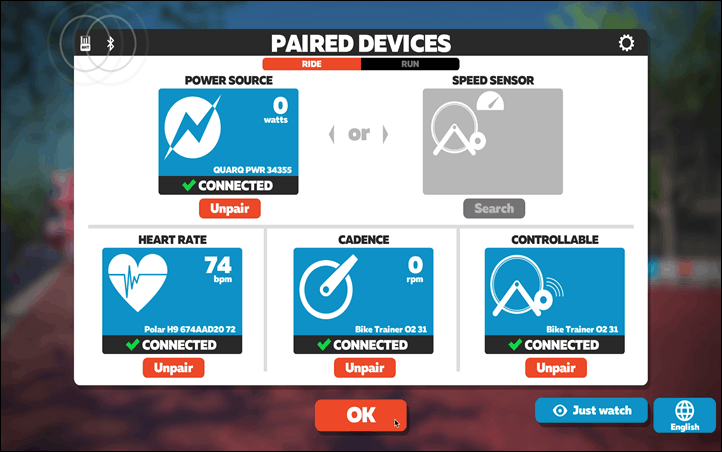
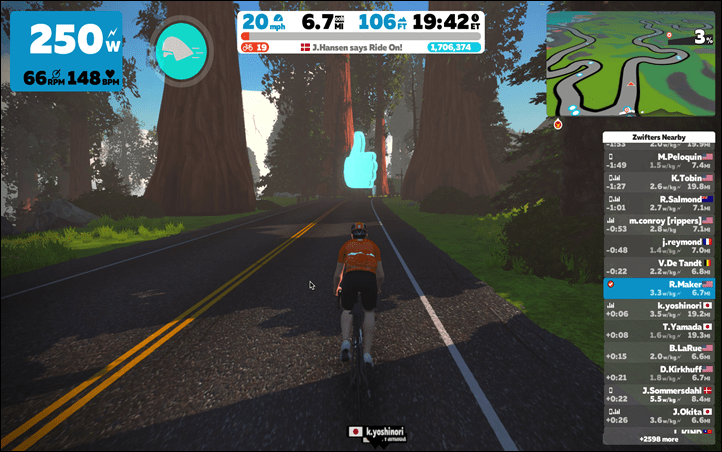

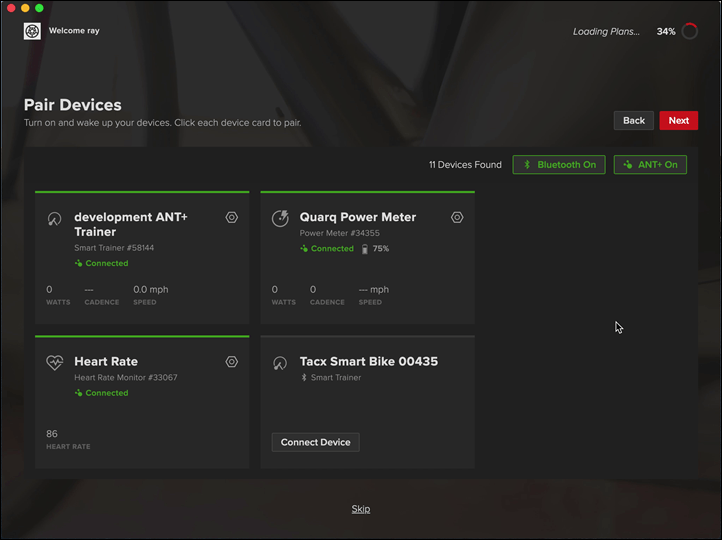
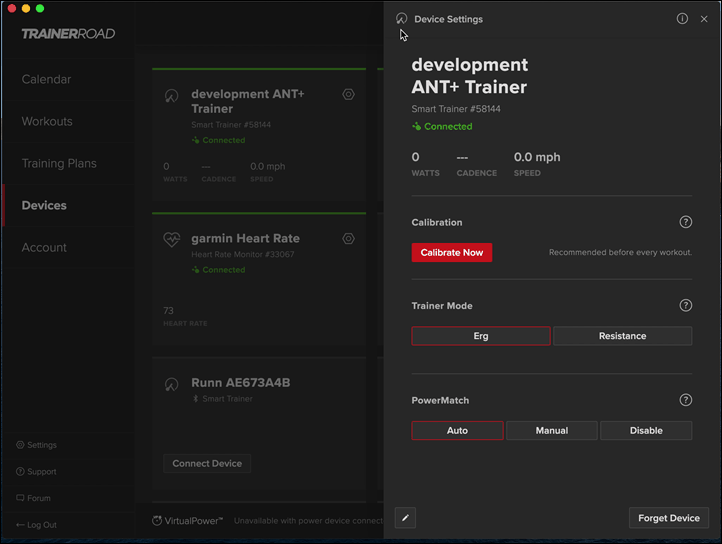

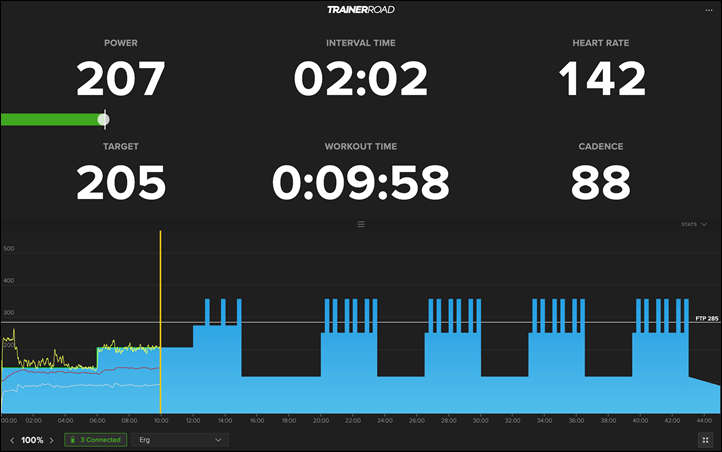


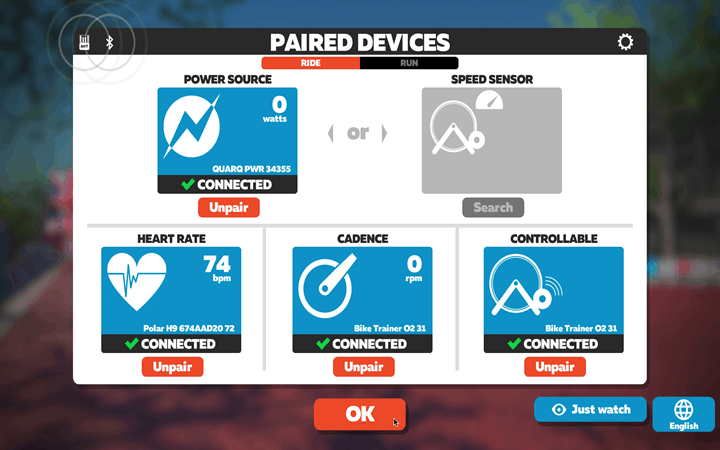


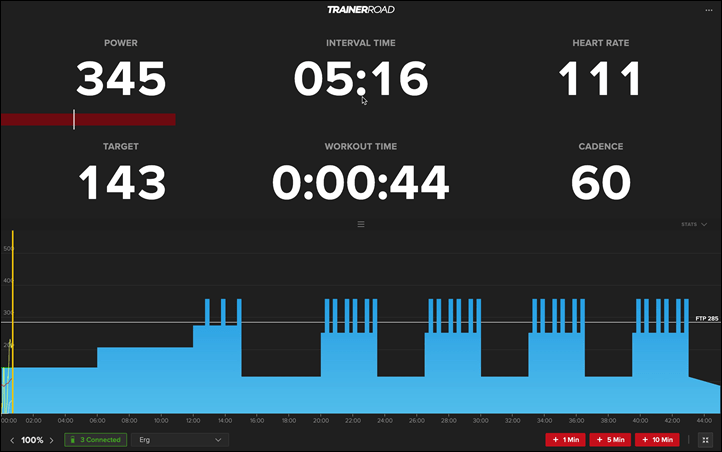

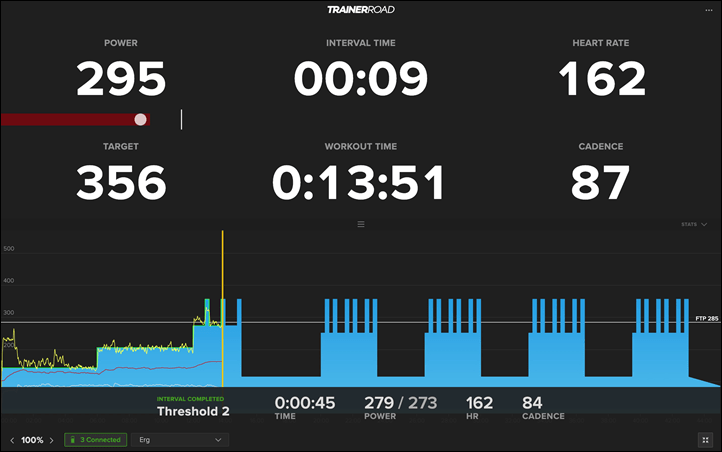

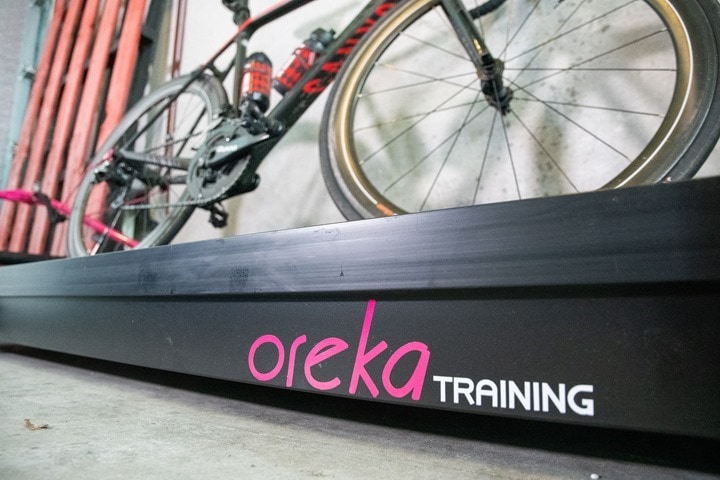





















Pretty slick to see something that bucks the norm of a smartrainer. Welldone!
I agree. While I can’t recommend it in its current state, I’m really hoping the company can find a way to evolve it into something that I can recommend down the road.
Dear Joshua S,
This is Jos from Customer Service of Oreka Training. Nice to meet you
We fully understand your point of view after watching the review and without any other information about us, as we would think exactly the same you do.
In case you would like to build your own criteria about our Company and products, the doors of our Headquarters are opened to test Oreka O2 trainer and learn in detail about us. Feel free to write us at info@orekatraining.com in case you would need any information.
Regards,
Dear Joshua,
This is Jos from Customer Service of Oreka Training. Nice to meet you
We fully understand your point of view after watching the review and without any other information about us, as we would think exactly the same you do.
In case you would like to build your own criteria about our Company and products, the doors of our Headquarters are opened to test Oreka O2 trainer and learn in detail about us. Feel free to write us at info@orekatraining.com in case you would need any information.
Regards,
Is the Tacx Magnum dead??
I don’t believe so, at least back in December or so it wasn’t. That said, I can’t see how Garmin would want to maintain that long term.
I’ve literally just seen both Tacx Magnum and Oreka at Bike Motion Benelux, so both bike treadmills are very much not dead
Ray, Is it possible to buy the Garmin/Tacx Magnum, or whatever its’ called now, in the U.S.?
I don’t believe so, but I’ll ask.
I received an email reply from Garmin Product Support.
Q: “Is the Tacx Magnum cycling treadmill still being produced and available (under some product name)? If so, is it available for purchase in the U,S,? If not, is another cycling treadmill with adjustable incline in development or planned?”
A: “We don’t currently have any plans to make the Magnum treadmill available for purchase in the US. I’m not aware of any plans for another product in the future. “
Given that this trainer would seem to lend itself to people using their primary bikes on it, which I’d guess would be fitted with their own power meters (for anyone considering this type of kit), is it really an issue that the onboard power measurement is totally pants beyond the fact that you’re presumably paying for that functionality?
If something is sold as part of the product and you’re paying for it, it needs to work. This is like selling a car with a speedometer that doesn’t work and telling people to use their phone GPS for the task. It’s lazy. We’re well into 2020 now, not 1975. Technology needs to work.
Yeah, I totally agree on that point Shane. I guess the question I should really have asked was did Oreka even need to include a PM on this in the first place? Does the fact that theirs is crap actually lessen the appeal of this (from a training perspective, rather than a valid financial and “feeling ripped off” one).
We can question GPS based speedometer accuracy, as the positioning has deviation +/- 5m, even if time can be measured precisely.
Swiss watch manufacturers include tachymeter on their products. You must know one unit distance 1km/1000m and read the speed at the point within the second digit arm… It is working very well, but I would like to know how many watch owners use that function…
That treadmill can measure weight/mass, speed, acceleration, time and resistance (in Watts). It can not measure the force arm length, force applied to the force arm and frequency/cadence. Therefore, that power output is correct. It is showing how much resistance a rider must overcome at a certain speed.
“Therefore, that power output is correct.”
Well, that’s a stretch. This treadmill can’t measure weight – and thus, that’s a piece its missing. As for other products, I haven’t heard of any complaints on the Tacx Magnum for at least being in the ballpark. Maybe that’s what you get for $10,000.
But, to me it’s simply not acceptable to broadcast 100w when I’m going 300w, no matter how hard they/it might struggle internally to figure out what my power output is. After all, the only metric that matters in this context is: What’s the riders cycling power output?
I think RehMn is basically correct, not that the “power output is correct”, that is obviously not true, but that there is simply not enough data available to the Oreka to make any good approximation of power. It’s like getting power estimation from the road, you need data from the bike. I suspect the Tacx Magnum is getting data from the sensors (but still is just using algorithms to “guess” at the power like with running power). At Oreka’s price, they are probably better off just bundling a pedal based power meter as an option and trying to get the experience as accurate and realistic as possible using bike based power. Seems more like a proof of concept more than a real product at this point, though.
“We can question GPS based speedometer accuracy, as the positioning has deviation +/- 5m, even if time can be measured precisely.”
The GPS deviation doesn’t tend to change very quickly so determining speed from GPS position data isn’t too bad. But, speed measurements with GPS are often calculated by using the Doppler shift of the GPS signals which is a lot more accurate.
Setting up the tire circumference in millimeters on your bike computer is beating any GPS device by far…
The worst thing you can do on your (Garmin) speed sensor is to set up this parameter to “Automatically calculated” instead of manual entry.
The hole concept does not really make sense as it is obviously dangerous. What happen, if there is a power cut? What happens, if there is an earthquake? What happens, if the rider does not steer correctly?
It is not acceptable to sell an unsafe product which hurt people, get them into hospital or even kill them. They should a ashamed of themselves
1) If you cut the power, it simply coasts to a stop, which happens pretty darn quickly (couple seconds at most) given the overall resistance of the unit.
2) During an earthquake, if indoors most people don’t normally wear a helmet – whereas with this I’d suggest doing so. Thus, you’d have a leg up on most others.
3) If you don’t steer correctly, just like rollers, you’ll crash. The core difference however to rollers is that if you crash on rollers:
A) You aren’t tethered to the system
B) There’s no bar to fall in between and get caught
C) Most importantly, the system/belt doesn’t keep going like this does
And that’s probably an interesting distinction to a typical running treadmill. In that scenario if you fall, you likely smash your face on the front, but then are ejected out the back. Sure, if you placed it close to a wall you could get pinned there as it sandpapers your face, but that’s sorta on you (in the same way me placing it close to a wall could potentially get me pinned there too, but my main concern would be getting pinned by the tether or handlebar).
By DerLordBS’s logic, people probably shouldn’t be selling bicycles ?
Dear DerLordBS,
This is Jos from Customer Service of Oreka Training. Nice to meet you
We fully understand your point of view after watching the review and without any other information about us, as we would think exactly the same you do.
In case you would like to build your own criteria about our Company and products, the doors of our Headquarters are opened to test Oreka O2 trainer and learn in detail about us. Feel free to write us at info@orekatraining.com in case you would need any information.
Regards,
I can’t imagine this product would work under u s products liability law, no insurance company would provide coverage to the manufacturer or any dealer
This was one of the main areas Tacx had to address for their Magnum. I recall there was a requirement to have the motor stop (almost) instantly which required a lot more engineering than first thought.
Dear Roger,
This is Jos from Customer Service of Oreka Training. Nice to meet you
We fully understand your point of view after watching the review and without any other information about us, as we would think exactly the same you do.
In case you would like to build your own criteria about our Company and products, the doors of our Headquarters are opened to test Oreka O2 trainer and learn in detail about us. Feel free to write us at info@orekatraining.com in case you would need any information.
Regards,
Answering a question that no one is asking. I understand how the product is supposed to work, but I just don’t get the appeal. Isn’t this job one when starting a company – ensuring that there is a market for your product that will actually pay what you are asking. Good luck!
My 2c – Everyone has made a wheel on or direct drive trainer. Companies are looking for the next ‘thing’ to sell and make (a lot of) money from. If they get it right then there’s a HUGE market who’ll set aside what they have and move over to this new ‘thing’. There’s going to be a lot more failures than successes before this happens.
Dear glorgitd,
This is Jos from Customer Service of Oreka Training. Nice to meet you
We fully understand your point of view after watching the review and without any other information about us, as we would think exactly the same you do.
In case you would like to build your own criteria about our Company and products, the doors of our Headquarters are opened to test Oreka O2 trainer and learn in detail about us. Feel free to write us at info@orekatraining.com in case you would need any information.
Regards,
Isn’t one of the main attractions to indoor cycling the safety aspect?
Indoor cycling has gotten too predictable…gotta get things more edgy!
Dear glorgitd,
This is Jos from Customer Service of Oreka Training. Nice to meet you
We fully understand your point of view after watching the review and without any other information about us, as we would think exactly the same you do.
In case you would like to build your own criteria about our Company and products, the doors of our Headquarters are opened to test Oreka O2 trainer and learn in detail about us. Feel free to write us at info@orekatraining.com in case you would need any information.
Regards,
I think the magnum was 8500€, not 10k, but still too expensove for most people.
My understanding was the price rose. But given I can’t find a price anywhere for it except on a single retailers site, hard to say. I feel like once you get to 8,500 – 10,000 is just a rounding error for those people. :)
Thanks DC, you probably saved a few lifes (and destructed a startup) by showing how shitty and dangerous is this treadmill, that would teach those Europeans a lesson of not wanting to ship over the USA
My goal is never to destroy a startup, even the odd one that says they want to sue me [Note: Not Oreka].
My goal is to give honest reviews of products, supported by data (or in this case: data + video demonstrating my issues). Or, when products work awesomely, show that too. Be it big or small companies.
I think in general I give smaller companies more chances to either sort things out or demonstrate why something is the way it is. But at the end of the day, data is data.
I will say – no company is ever ‘surprised’ by my thoughts on a post. Or at least, they shouldn’t be. Oreka and I had discussed my concerns numerous times since December. Obviously, companies don’t see any form of my review till I post, but usually companies can understand from how my conversation is going whether I have concerns. The same is true of Suunto this past week as well. I raised concerns the day after my first run with them on it, in an hour-long in-person meeting. Then again in early February.
@Ray if you don’t mind sharing, how many companies (roughly) approach you per year (or month if the number is as high as I believe) about their products?
As for this product, I like new ideas and innovation (even if iterative), may they all prosper and develop! but this is too pricey for the service rendered.
From a pure numbers standpoint, I’d guess 2-4 per day. I’d say a portion of those though are legit things I’d consider. Some of them are just scattershot stuff that aren’t either viable for what I cover, or junk no-name products.
Within the category of things I’d legit consider, I’d say it’s a solid 7-10 per week. On a weekly basis, a portion of those is apps, which I’m usually wishy-washy about unless I see true innovation. Life’s too short to review bad apps that nobody has heard about and nobody would care about anyway.
Ultimately, it’s a balance for me of trying to write/shoot things I think people will be interested in, as well as stuff that I find interesting myself. I try and minimize the number of boring things I have to write about. :)
ouch! Thank you for the answer and bravo for the triage skills… That is truly impressive :dizzy_face:
Dear Rajah,
This is Jos from Customer Service of Oreka Training. Nice to meet you
We fully understand your point of view after watching the review and without any other information about us, as we would think exactly the same you do.
In case you would like to build your own criteria about our Company and products, the doors of our Headquarters are opened to test Oreka O2 trainer and learn in detail about us. Feel free to write us at info@orekatraining.com in case you would need any information.
Regards,
You got a heavy belt passing around and over a plethora of rollers, sliding over flat areas, and being driven both by the bike and a motor. That certainly complicates power determination. I find it surprising it works as well as it does in erg mode using the Quarq for power.
I like the idea of “freely” riding the bike but I think something like free-motion rollers with good power and resistance might be a much simpler and better solution.
Dear Heinrich,
This is Jos from Customer Service of Oreka Training. Nice to meet you
We fully understand your point of view after watching the review and without any other information about us, as we would think exactly the same you do.
In case you would like to build your own criteria about our Company and products, the doors of our Headquarters are opened to test Oreka O2 trainer and learn in detail about us. Feel free to write us at info@orekatraining.com in case you would need any information.
Regards,
I don’t need to spend 3,699EUR + shipping fees to the US to crash indoors, I can do that on my Saris M2 for only $400 (thank you Black Friday sale). And have…
Interesting premise that would make moving the bike indoors and out breeze. But the power guestimating, lack of in Zwift grade sensitivity, fancy bungee cord bike attachment system (why not something like the Surly Bill/Ted trailer mount that allows for some left/right/twisting motion while still locking the bike in an upright position to the frame of the device), “safety bars” that appear to make the inevitable crash infinitely worse and no “dead man” switch to stop it when you do crash off it, make this a no brainer to avoid.
Even if i wasn’t on the wrong side of the pond to get a hold of one.
Dear,
This is Jos from Customer Service of Oreka Training. Nice to meet you
We fully understand your point of view after watching the review and without any other information about us, as we would think exactly the same you do.
In case you would like to build your own criteria about our Company and products, the doors of our Headquarters are opened to test Oreka O2 trainer and learn in detail about us. Feel free to write us at info@orekatraining.com in case you would need any information.
Regards,
Excellent review as always Ray. I did spot a typo in the App Compatibility section:
“So while it showered the power the Oreka platform…” think that should be “showed”…
Thanks Nigel!
Just want to add that the bit in the video where the thing is spinning at high speed after you got off the bike might be the funniest moment in DCR video history. I was cracking up watching it on the trainer this morning. I realize it likely wasn’t very funny at the time, but it makes for great video material.
Dear David,
This is Jos from Customer Service of Oreka Training. Nice to meet you
We fully understand your point of view after watching the review and without any other information about us, as we would think exactly the same you do.
In case you would like to build your own criteria about our Company and products, the doors of our Headquarters are opened to test Oreka O2 trainer and learn in detail about us. Feel free to write us at info@orekatraining.com in case you would need any information.
Regards,
I imagine they’ve considered an elastic tether on the front skewer to make deceleration ‘more realistic’, but it would introduce its own set of tradeoffs.
“The Oreka platform only has power estimation, and in this case – it’s not terribly ideal. Oreka says that when the unit is simulating 3% or less (flat roads), they struggle with accuracy substantially. It sounds like this largely has to do with the speed of the system, and that it struggles at higher speeds rather than lower speeds.
Instead, the company recommends using an external power meter with the Oreka platform.”
Unclear if you mean 0-3% slope cannot be replicated at all due mechanical limitations of the Oreka or whether the external meter helps.
Perhaps not a big issue for ERG workouts but simulations would be marginal.
0-3% slope cannot be replicated at all. It doesn’t sound like it’s truly a mechanical limitation, but more of a software/experience limitation.
I wonder if this concept could work unpowered as a DIY project: a few rollers and a rubber mat ain’t expensive at all, it would not be dissimilar to normal rollers but with added freedom of movement.
The problems I see:
A: it would probably cost a little power to get a mat rolling, but maybe within the realm of a capable cyclist… (could even add magnets to add resistance)
B: the power comes out of the back wheel, so would the inertia be enough to let the front wheel move freely…
“with added freedom of movement”
How? This platform and the rear strap effectively hold the bike in a fore-aft position, similar to the double drums on rollers. You can slide left and right on regular rollers. Using motion rollers like the Inside Ride ones even allow for vigorous pedaling on the verge of full sprints.
I just don’t see what making a dumb belted version of this platform offers over motion rollers.
It might be similar to the effect you get on a Elite E-motion roller: mind you that the strap on the back can be elastic & with the mutlitude of rollers underneath the mat you have much more fore/aft movement and total sideways movement. On the mat the front wheel looks a lot more secure/save and free to move then normal rollers do.
Increasing resistance on a level treadmill is not the same as inclining the treadmill. Different muscles are brought into play or stressed in a different way.
That is a huge feature difference from Tacx.Magnum treadmill. That is a disqualifier for me, even if all DC Rainmaker’s critiques of the Oreka O2 Cycling Treadmill are successfully addressed by the company..
As to whether the Tacx magnum is still available, and in U.S.A.? Or a new model of cycling treadmill with adjustable incline in the pipeline for future release?
When do you test the oreka 05?
I would buy it when i can run on it, and bike on it!!!
Noise levels? Is it ok for In house use?
Why you don’t recommend it in general?
It’s incredibly loud, some jet engines are quieter. As noted, other reasons not to recommend:
A) Isn’t safe
B) Doesn’t support more than 4% grade
C) Isn’t accurate
D) Is expensive.
Among other reasons.
Any plans to test the Oreka O5/O7?